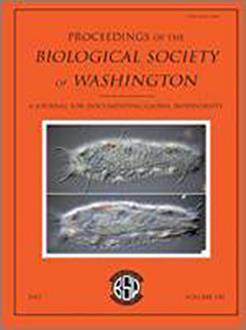Fringe-lip tongue soles with three ocular-side lateral lines and different ocular-side color patterns were collected mainly at fish landing ports from east to south coastal regions of China. Specimens were divided into three groups: those with color patterns previously reported for Paraplagusia japonica (Temminck & Schlegel, 1846) called Color Pattern I (CPI) and Color Pattern II (CPII); and those, preliminarily identified as Paraplagusia sp., that featured a different color pattern (CPIII). CPI featured only pale ocelli superimposed on a greenish-brown or yellowish-brown background color; CPII featured only black spots superimposed on a brownish-black or grayish-brown background color; and CPIII featured both pale ocelli and black spots mixed over a yellowish-brown or brownish-black background color. Specimens with CPI pattern are smaller in body size (78.3–279.0 mm SL) compared to the lengths of specimens with the CPII (191.7–337.1 mm SL) and CPIII patterns (155.9–352.9 mm SL). To determine whether specimens with CPIII represent a species different from P. japonica, a series of morphological characters and two partial gene sequences (COI and RAG1) were analyzed. Analyses revealed that specimens with these three different color patterns overlapped in 27 morphological characters including nine meristic and 18 morphometric features. And, the K2P genetic distances of COI and RAG1 fragments were 0.000–0.007 and 0.000–0.006, respectively. This study confirms that fringe-lip tongue soles inhabiting coastal waters of China that possess three lateral lines, but have different ocular-side pigmentation patterns, belong to one species, P. japonica. These results also caution the use of pigment features as diagnostic characters to distinguish species of Paraplagusia. An updated redescription and synonymy for P. japonica, including summaries of variation in morphological characters and pigmentation, size at maturity, and geographical distribution are provided. Results of the present study will be helpful in better understanding the taxonomic significance of color patterns of cynoglossid flatfishes.
How to translate text using browser tools
12 February 2019
Color pattern variation, nomenclatural appraisal, and re-description of Paraplagusia japonica () (Teleostei: Pleuronectiformes: Cynoglossidae)
Hairong Luo,
Thomas A. Munroe,
Xiaoyu Kong
ACCESS THE FULL ARTICLE
It is not available for individual sale.
This article is only available to subscribers.
It is not available for individual sale.
It is not available for individual sale.
Flatfish
genetic distance
NEIGHBOR-JOINING TREE
pigmentation
tongue sole





